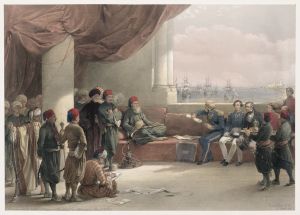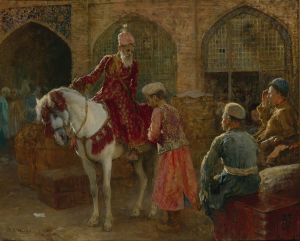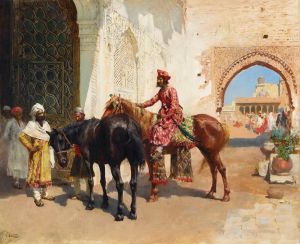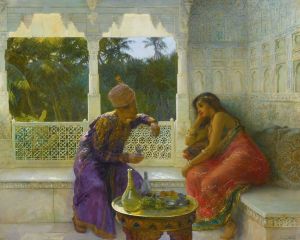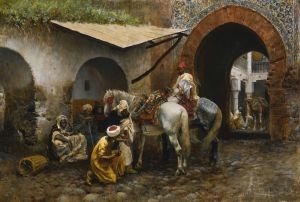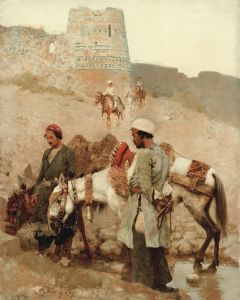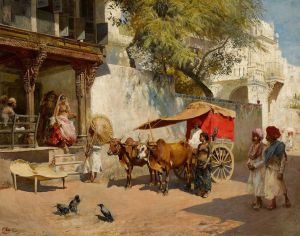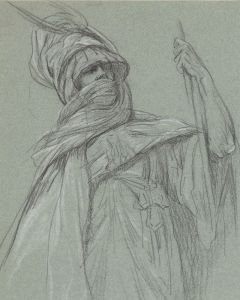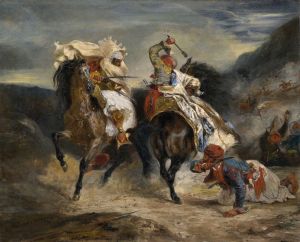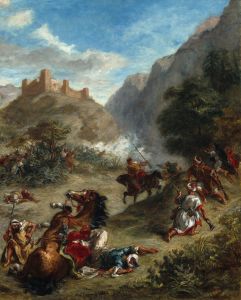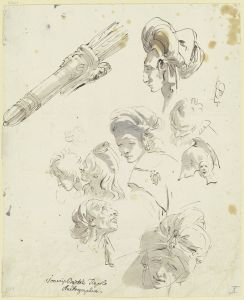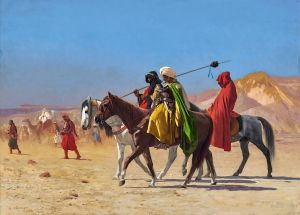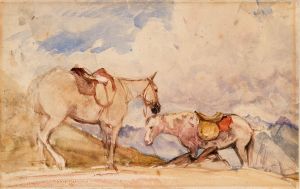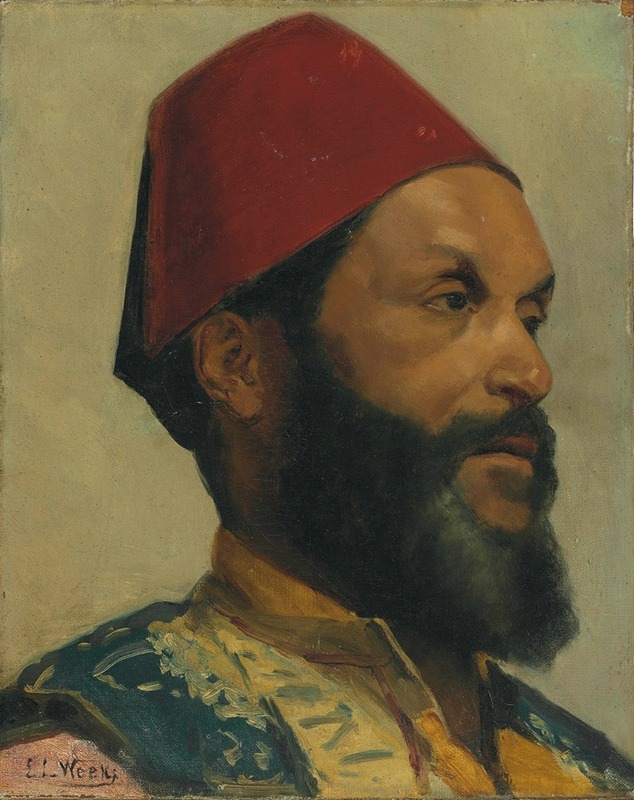
Portrait of a Turkish Man
A hand-painted replica of Edwin Lord Weeks’s masterpiece Portrait of a Turkish Man, meticulously crafted by professional artists to capture the true essence of the original. Each piece is created with museum-quality canvas and rare mineral pigments, carefully painted by experienced artists with delicate brushstrokes and rich, layered colors to perfectly recreate the texture of the original artwork. Unlike machine-printed reproductions, this hand-painted version brings the painting to life, infused with the artist’s emotions and skill in every stroke. Whether for personal collection or home decoration, it instantly elevates the artistic atmosphere of any space.
Edwin Lord Weeks was an American artist known for his Orientalist paintings, which often depicted scenes from the Middle East, North Africa, and South Asia. Born in Boston in 1849, Weeks developed an early interest in art and travel, which led him to explore various cultures and landscapes that would later become the subjects of his work. He studied under prominent artists in Paris and was influenced by the Orientalist movement, which sought to capture the exoticism and allure of Eastern cultures through Western artistic perspectives.
"Portrait of a Turkish Man" is one of Weeks' notable works, reflecting his fascination with the people and cultures he encountered during his travels. Although specific details about the painting's creation and history are limited, it is consistent with Weeks' broader body of work, which often focused on capturing the essence of the individuals he met and the environments he visited.
The painting likely features a Turkish man in traditional attire, a common theme in Weeks' portraits, which aimed to present an authentic representation of the subject's cultural background. Weeks was known for his meticulous attention to detail and his ability to convey the textures and colors of fabrics, architecture, and landscapes. This attention to detail is evident in his portraits, where the clothing and accessories of the subjects are rendered with precision, providing insight into the cultural and social context of the time.
Weeks' work is characterized by its vibrant use of color and light, drawing viewers into the scene and creating a sense of immediacy and presence. His ability to capture the play of light and shadow adds depth and dimension to his paintings, enhancing the realism and emotional impact of the portraits. This skill is likely evident in "Portrait of a Turkish Man," where the interplay of light and color would serve to highlight the subject's features and attire.
Throughout his career, Weeks exhibited his work in various prestigious venues, including the Paris Salon, where he gained recognition for his contributions to the Orientalist genre. His paintings were well-received for their technical skill and the way they conveyed the allure and mystery of distant lands. Weeks' work remains significant in the study of Orientalism and the Western artistic interpretation of Eastern cultures.
While specific information about "Portrait of a Turkish Man" is limited, it can be appreciated as part of Edwin Lord Weeks' broader oeuvre, which offers a window into the artist's travels and his engagement with the diverse cultures he encountered. His paintings continue to be studied and admired for their artistic merit and their role in the historical context of 19th-century Orientalism.





